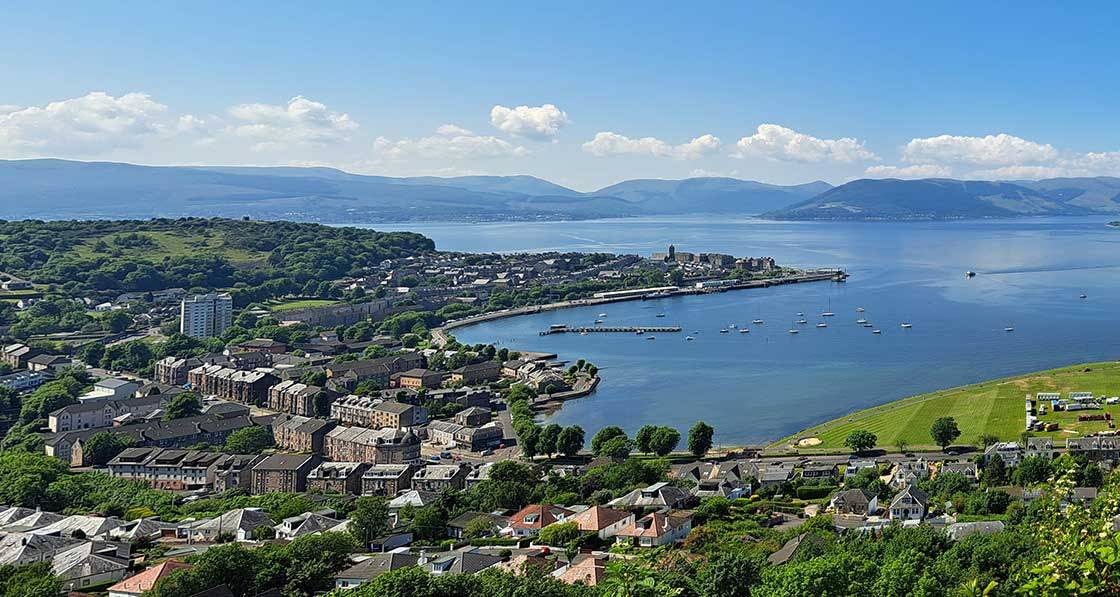
- Feature
- Posted
Bonny in Clyde
How do you solve a problem like decarbonising social housing, and do so rapidly, en masse, in a manner that lifts vulnerable people out of fuel poverty while delivering warm, healthy homes? River Clyde Homes may be about to pull off the seemingly impossible.
Rapidly decarbonising our built environment is an urgent task, but it poses a vicious puzzle: how to do it fast, but do it well? And how to pay for it? Deep retrofit is complex, and poorly executed upgrades have a history of causing damp and mould.
The UK and Ireland both plan to become zero carbon societies by 2050. Both countries will need to upgrade a large majority of their homes — two million dwellings in Ireland, twenty-seven million in the UK— by 2050. This will require an unprecedented scaling up of retrofit, and an unprecedented level of investment.
The UK government sees heat pumps as one answer to this challenge — it wants to install 600,000 every year from 2028 onwards to deliver low carbon heat to homes, with less emphasis on fabric upgrades.
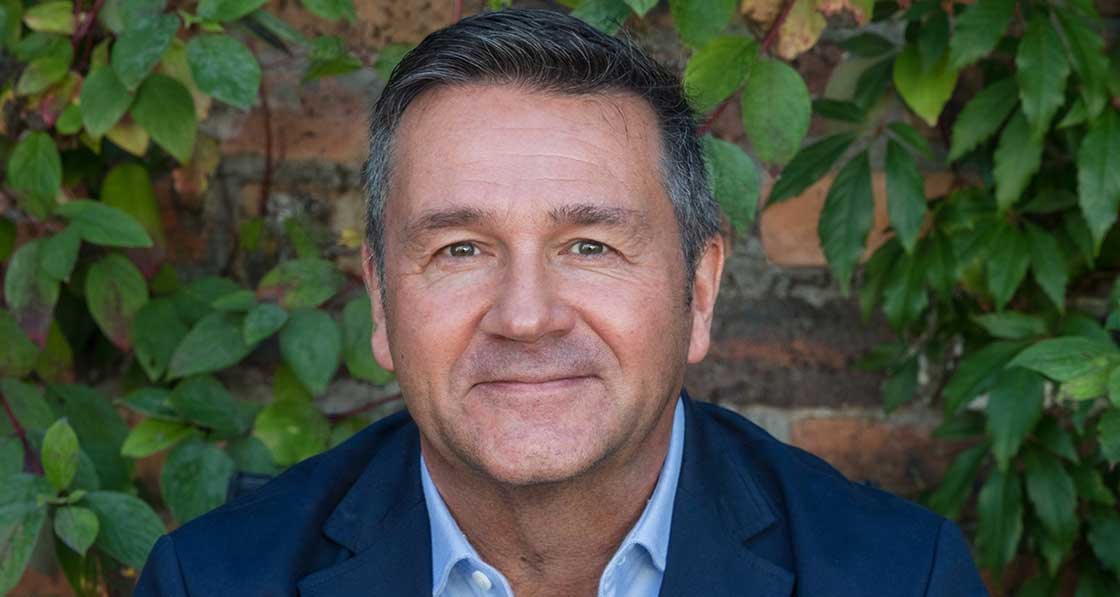
Duncan Smith, head of energy and sustainability at River Clyde Homes
But heat pumps require careful design and installation, and if electricity prices are high, they can run up frightful bills in poorly insulated homes. Deep fabric upgrades are better at cutting fuel poverty and making homes comfortable, but they can be complex and expensive.
One housing association in Scotland has come up with a different answer to this puzzle. River Clyde Homes, which manages 6,000 dwellings in Inverclyde, west of Glasgow, wants to decarbonise its housing stock through a mix of whole-house retrofit, low carbon heat networks, and by generating its own renewable energy.
Passive house advocates might shudder at the idea, but the association thinks that the way to decarbonise and eliminate fuel poverty is to perform more modest whole-house retrofits, and then meet heat demand via low carbon heat networks, powered by heat pumps and other renewables.
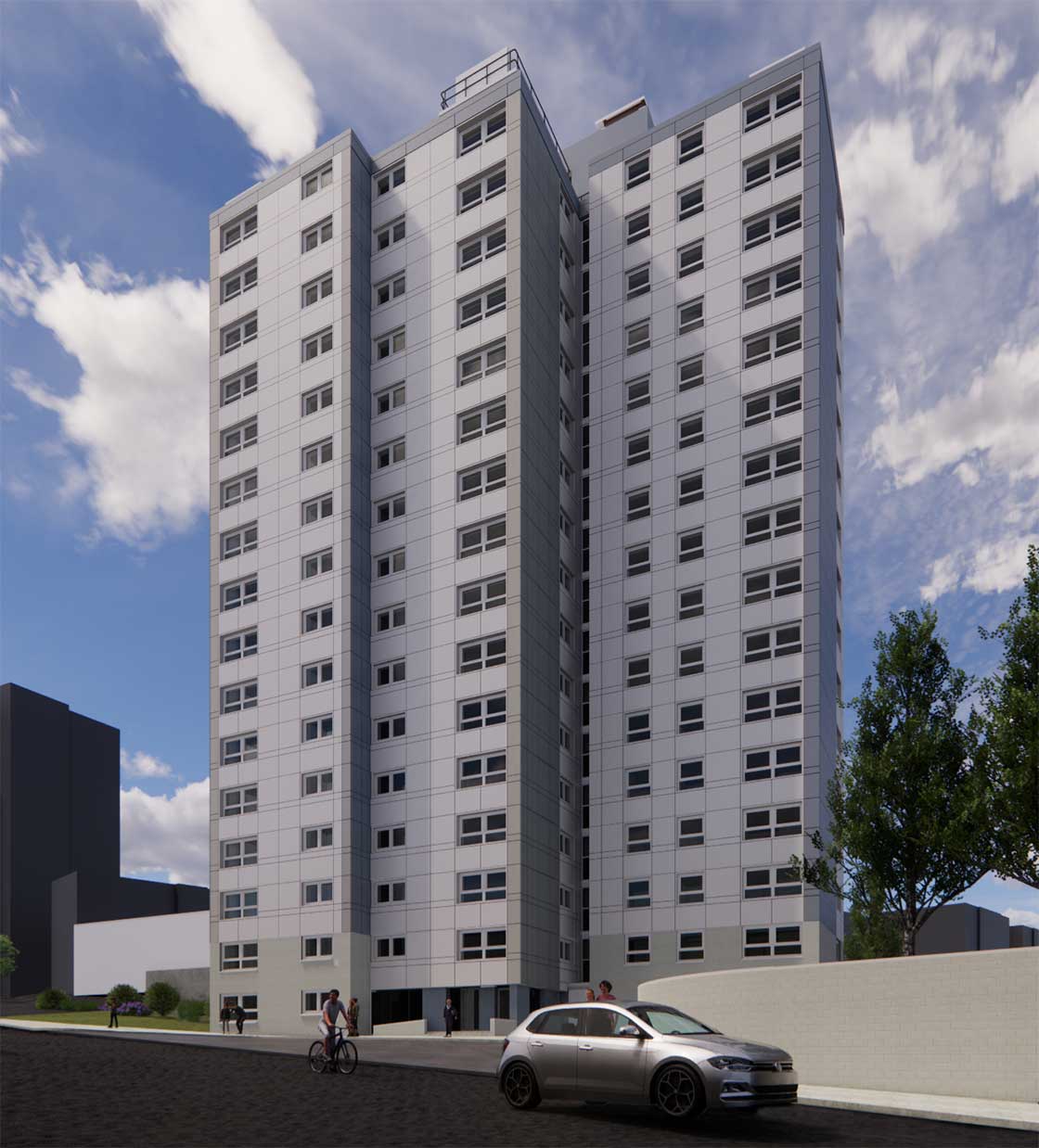
A rendering of the new façade of Prospecthill Court, a tower block being retrofitted to the AECB CarbonLite Retrofit Level 2 standard by River Clyde Homes
The association is currently deep retrofitting a block of 90 homes to the AECB’s CarbonLite Retrofit L2 building standard, an energy standard based on passive house principles, but with a space heating and cooling demand of 50 kWh/m2/yr rather than the target of 25 kWh/m2/yr for the Passive House Institute’s retrofit standard, Enerphit, and an airtightness q50 requirement of 2.0 rather than the Enerphit n50 target of 1.0. In fact Smith says the project is on course to exceed the energy targets of the CarbonLite New Build L3 standard, which strictly speaking isn’t applicable to retrofits, and has tighter targets of 40 kWh/m2/yr and an airtightness q50 score of 1.5 or better.
But as Smith thinks ahead to how River Clyde Homes will retrofit most of its 6,000 dwellings, he says it will need to adopt a more pragmatic approach and get the balance right between fabric and heating.
Duncan Smith, head of energy and sustainability at River Clyde Homes, is honest about the challenges of performing very deep retrofits over large numbers of dwellings. “The fabric measures that we would like to do are probably challenging both practically and financially for all of our homes,” he says.
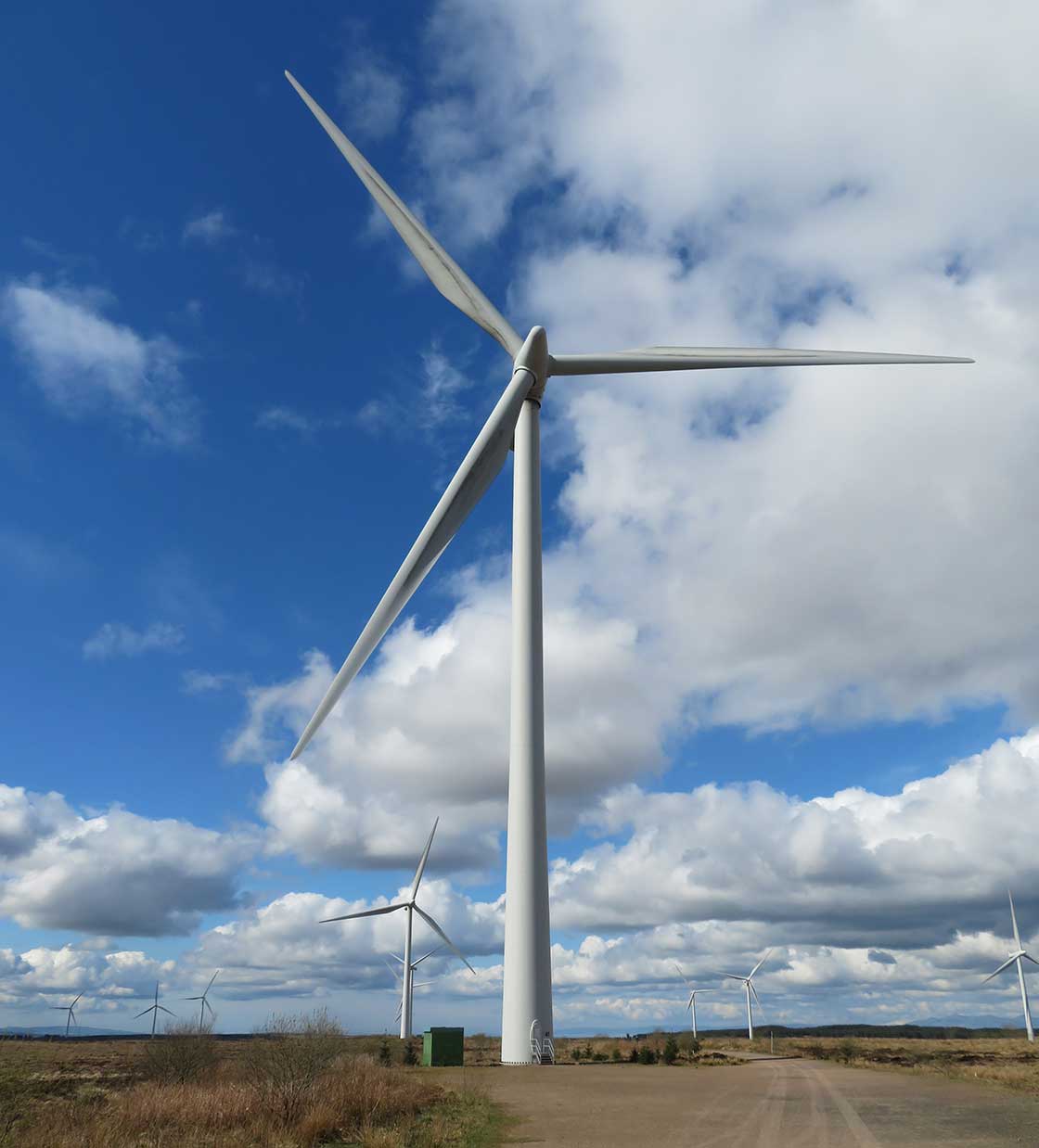
A wind turbine at Whitelees Wind Farm, the UK’s largest onshore wind farm, which is located near Glasgow
This article was originally published in issue 45 of Passive House Plus magazine. Want immediate access to all back issues and exclusive extra content? Click here to subscribe for as little as €15, or click here to receive the next issue free of charge
“I think the reality is about eighty per cent of the time we’ll be between 50-80 kWh for space heating demand, with four air changes per hour of airtightness,” he says. The emphasis will still be on careful whole-house retrofit, with cheap and publicly-owned renewables supplying the remaining heat demand.
“We can address fuel poverty, we can eradicate dampness and mould, and we can do it in a practical way,” he says. River Clyde Homes currently has about eight hundred dwellings on three district heating networks, mostly run on biomass, but envisages a major of expansion of this, with future networks running on heat pumps.
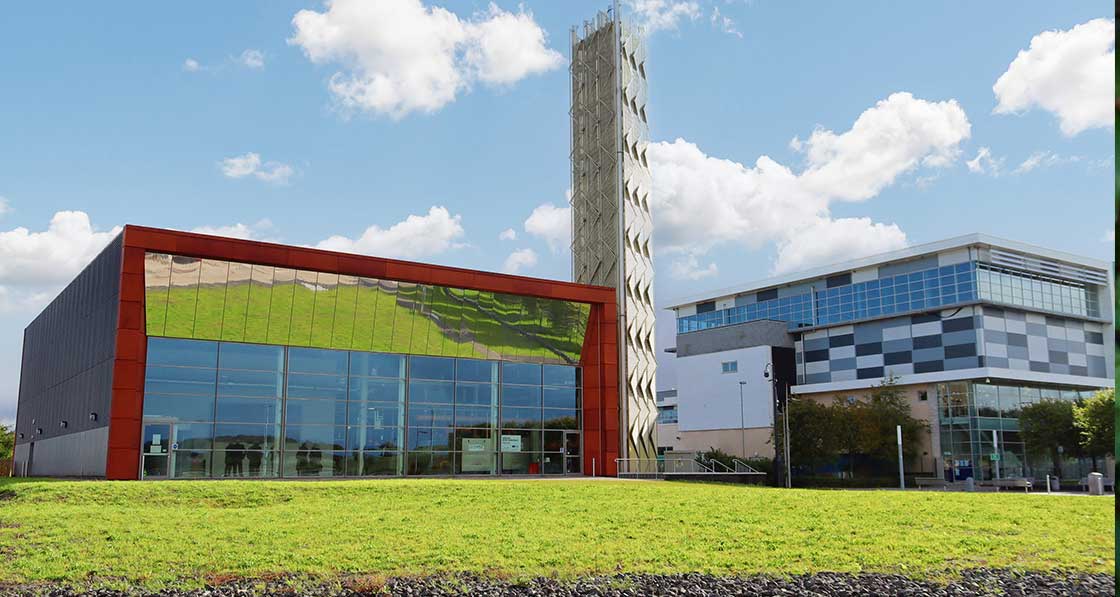
Queens Quay regeneration project features the UK’s largest heat pump powered district heating system, featuring two 2.6 megawatt water source heat pumps built by Star Refrigeration
Where next for district heat?
District heating is hardly new. The oldest known example comes from France, where hot spring water was first piped to thirty homes in the spa town of Chaudes-Aigues during the 14th century.
In Europe, district heating provides over sixty per cent of residential heating in Denmark, and fifty per cent or more in each of Sweden, Estonia and Lithuania. By contrast, heat networks currently meet just two per cent of the UK’s heat demand, but the government envisages a major expansion in the coming decades.

Queens Quay regeneration project features the UK’s largest heat pump powered district heating system, featuring two 2.6 megawatt water source heat pumps built by Star Refrigeration
Of course, district heating is only as green as the fuels it uses. Globally, nearly ninety per cent of district heat was produced by fossil fuels in 2021, especially in China and Russia. Renewables represent about five per cent of global supply, and most of this comes from burning biomass or waste.
But in Sweden, Denmark, Austria, Estonia and Lithuania, more than fifty per cent of district heat comes from renewables. Sixty per cent of all renewable energy in Europe now comes from biomass though, and this has not been without controversy.
Last year, environmental NGOs fought, but ultimately lost, an effort to remove woody biomass from Europe’s Renewable Energy Directive because of concerns over its climate and environmental impact. In 2021, a group of five hundred scientists and economists wrote a letter to world leaders asking them to stop burning trees for bioenergy because of its impact on climate and biodiversity.
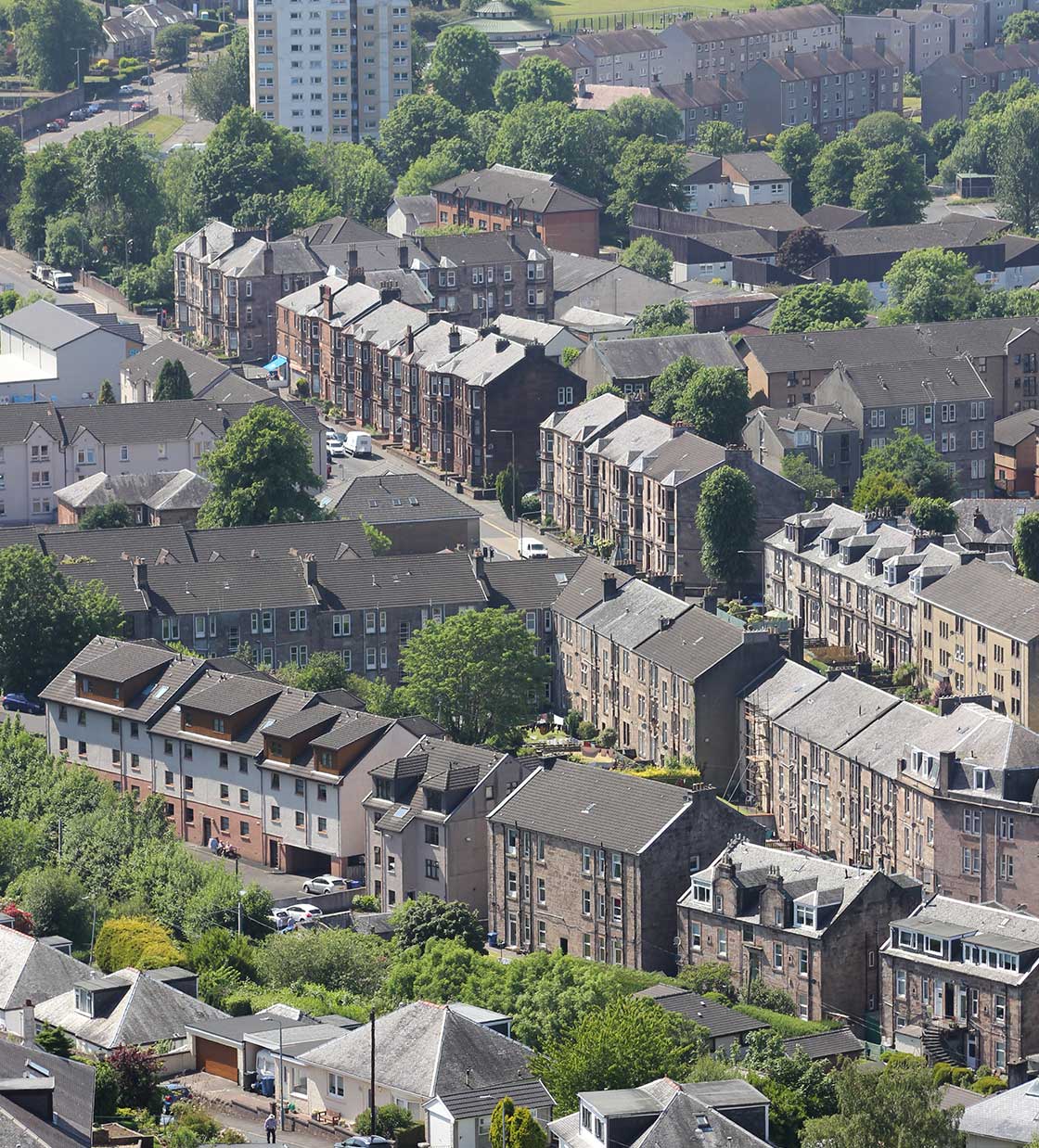
The housing stock features a diverse range of housing typologies including tower blocks and tenements
The letter said there has been a shift in recent years from burning forestry wastes for bioenergy towards burning whole trees or large portions of stem wood, releasing carbon that could otherwise remain stored in forests.
“Regrowing trees and displacement of fossil fuels may eventually pay off this carbon debt, but regrowth takes time the world does not have to solve climate change,” the letter read. “As numerous studies have shown, this burning of wood will increase warming for decades to centuries.”
Expansion of heat pumps, wind and solar will be critical to replace biomass and fossil fuel powered heat networks. Duncan Smith says that River Clyde Homes want to exploit the huge potential for renewable energy that exists in the Clyde itself, and along the west coast of Scotland. “Water based heat pumps are absolutely the way to go,” he said. “We have access to huge amounts of freshwater, and lots of wind too.”
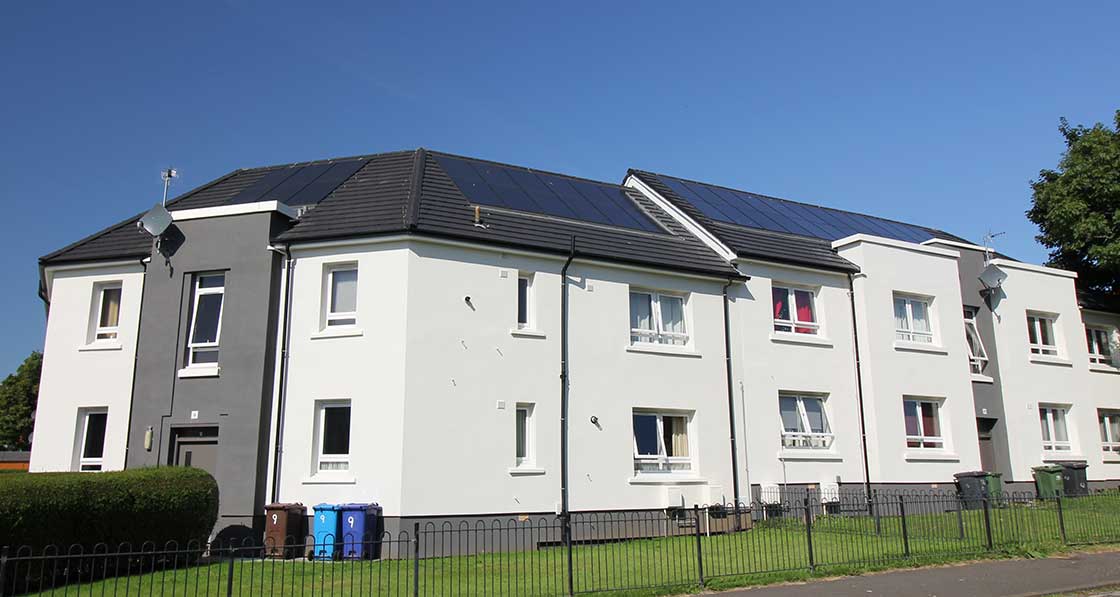
An Enerphit project from Duncan Smith’s time at Renfrewshire Council
Queens Quay
An exciting template exists just down the estuary in Clydebank. There, the Queens Quay regeneration project features the UK’s largest heat pump powered district heating system. Two 2.6 megawatt water source heat pumps capture heat from the Clyde and deliver it to a heat network that extends for three kilometres from east to west, and 750 metres from south to north. The heat pumps use ammonia, which has a global warming potential of zero, as their refrigerant, and deliver about three units of heat for every unit of electricity.
Queens Quay will eventually feature over 1,000 homes, a health centre, care home, leisure centre, offices, shops and civic spaces. “In terms of what the network could be expanded to, it could be five or six times the size, it’s just a matter of putting the pipes in the ground,” says Dave Pearson, group sustainable development director of Star Refrigeration in Glasgow, which built the heat pumps. “The Clyde itself could supply well over 1,000 times what we’re doing at the moment.”
Pearson points out that with its abundance of wind energy, the carbon footprint of electricity in the south of Scotland is particularly low. The region also has nuclear power. Between January 2020 and October 2023, the south of Scotland had the smallest average carbon footprint for electricity of any UK region at 47.28 gCO2e/kWh (the worst performing region was the south of Wales, at 316.94 gCO2e/kwh).

An elevation of Huntley Drive, an RCH deep retrofit project.
“The only things holding back subsequent projects are a coordinated effort to push buildings away from gas towards district heating, but more importantly a radical rethink on electricity pricing,” he says. Heat pump operators are currently paying over 30p per kilowatt for electricity, even though wind farms are selling it to the grid from just 4p per kilowatt. This is down to a “slew of outdated policy levers”, Pearson says.
Across the Irish Sea, the recently opened Tallaght District Heating Scheme in Dublin takes waste heat from Amazon’s Tallaght data centre and uses it to heat 32,800 square metres of public buildings, including Technological University Dublin’s local campus, plus the county hall and county library. The heat network is operated by Ireland’s first publicly owned, not-for-profit energy company.
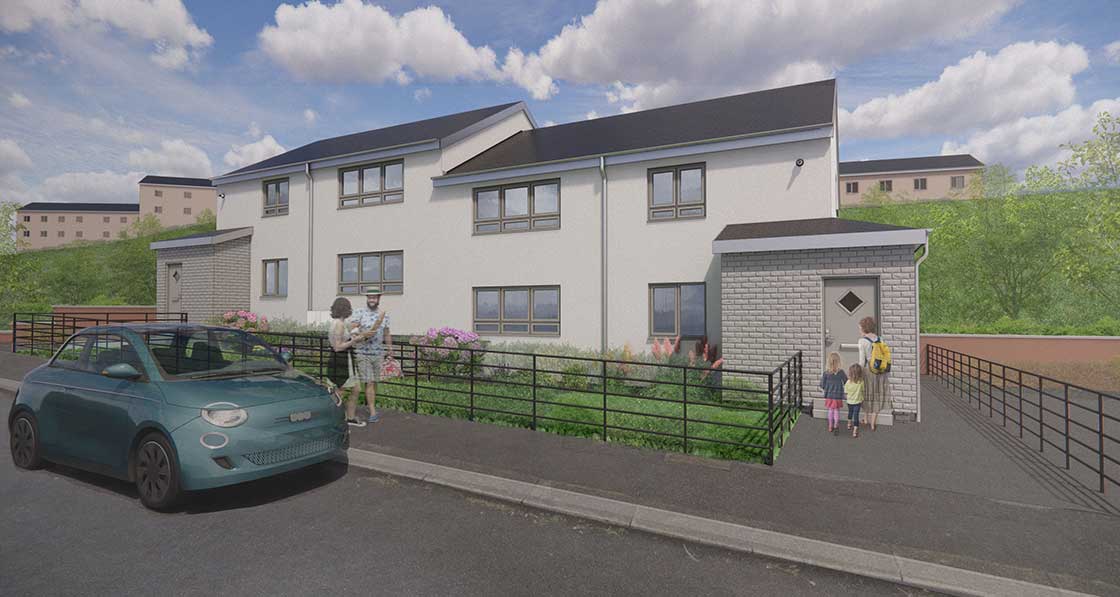
Rendering of Huntley Drive, an RCH deep retrofit project.
Notwithstanding the question of whether building new data centres is a good idea — they are projected to account for twenty- eight per cent of Ireland’s electricity demand by 2031 — there remains huge potential to capture waste heat and distribute it via heat networks. Dublin’s energy agency Codema says there is enough waste heat and deep geothermal energy in the city to heat one million homes via district heating, with most of the waste heat coming from power stations, data centres, wastewater treatment plants and industry.
In the UK, the energy consultancy Fairheat estimates that waste heat from the industrial sector, wastewater treatment plants and incineration plants could supply fourteen per cent of the country’s space heating and hot water demand.
Locally owned heat & power
But if heat networks are to help eliminate fuel poverty, we may need to embrace new models of generating and selling energy. Last year, district heating made headlines in both the UK and Ireland, with residents of apartments running on gas-fired heating reporting eye-watering energy bills. The sector suffers from a lack of regulation in both countries.
In the UK, residents in council homes and private flats serviced by district heating have faced bill increases of up to seven hundred per cent, the Social Market Foundation has warned. Tenants have not benefitted from the government’s recent energy price cap because heat networks are treated as businesses rather than homes.
“The problems in heat networks disproportionately affect the worst-off families,” said Will Damazer, author of a report for the foundation on how to make heat networks fairer. “They have to put up with higher prices, worse regulation and less control over their heating and energy use.”
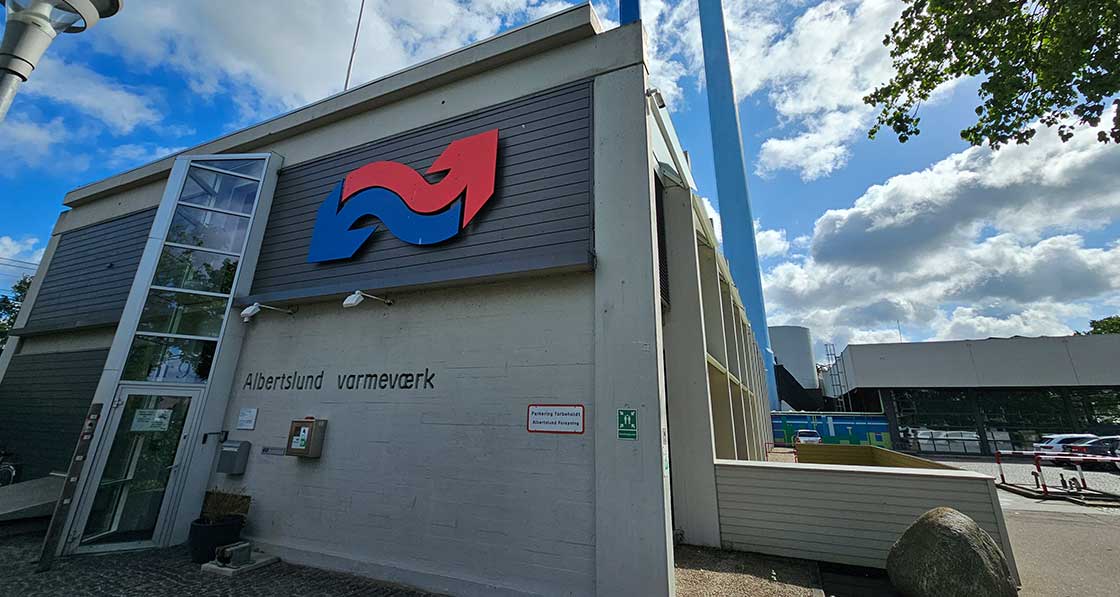
Albertslund heating plant, which heats the whole Albertslund suburb in Copenhagen including (below) non-profit social housing apartments from Bo-Vest.
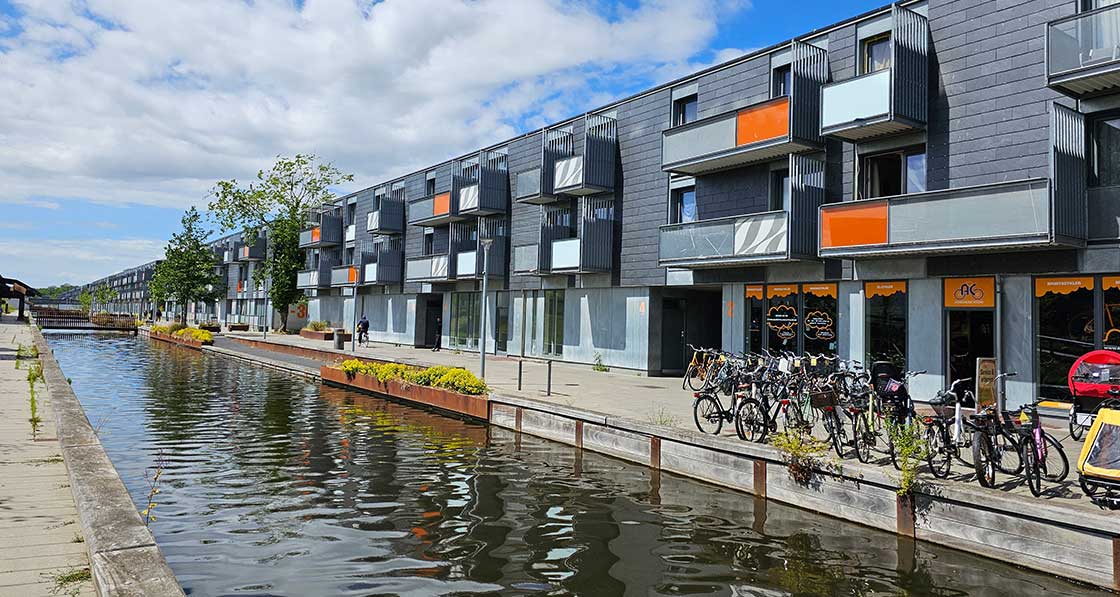
Residents serviced by district heating often have no option to change supplier, creating monopolies that can exacerbate the risk of price gouging. Duncan Smith believes the only way to protect tenants, and to shield them from high energy prices, is for housing associations to start producing their own renewable energy.
“One of my concerns with energy security is that unless you tackle it head on, you’re always going to be dependent on the market, which quite frankly is broken,” he says. “So, are we going to let the market provide energy, or do we look for models that are more equitable, more sustainable?”
Smith envisages River Clyde Homes building out heat networks, powered by water source heat pumps along the Clyde. And he foresees the association developing its own wind and solar farms to power those heat pumps with cheap, clean electricity. “If we want to look at big industrial heat pumps to produce low temperature heat, we need to think about how we feed those units. If we buy from the gird, we’re exposed to the same prices that you and I are exposed to,” he says. “If we put a turbine on the hills and produce energy, we think we can provide electricity for 4p per kilowatt.” The association could then sell heat to its tenants for between 4p and 8p per kilowatt, he says. “For any income level, that’s solving fuel poverty.”
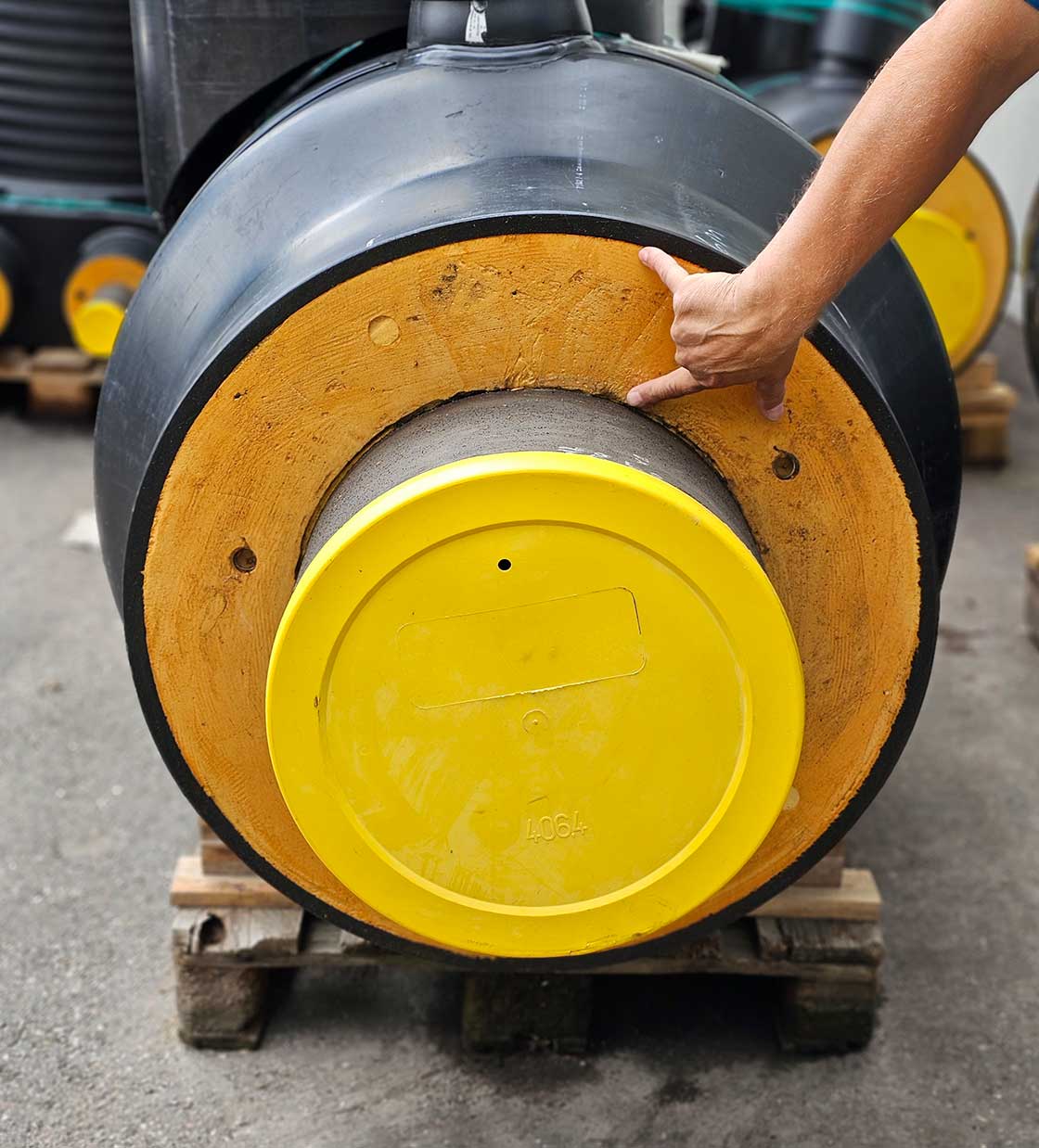
Logstor insulated pipework for district heating in Albertslund.
Energy service companies
Public or co-operative energy utilities are rare in the UK and Ireland, but far more common in mainland Europe. Of Denmark’s 350 district heating companies, approximately eighty per cent are owned co-operatively by their members, and most of the rest are owned by municipal authorities. There are few private companies in the sector, and a legal requirement to sell networked heat as cheaply as possible helps to keep prices down.
Germany, meanwhile, has around nine hundred stadtwerke, or municipal utilities, which are owned by local authorities, and which supply water, energy and other essential services. Today, stadtwerke account for sixty-five per cent of heat distribution in Germany, and they enjoy strong public trust.
Smith is excited about the possible knock-on benefits of locally owned, renewable heat networks. For example: there are about 40,000 homes in Inverclyde, and the average annual UK energy bill is about £2,500, which means £100 million leaves the area each year and goes to large energy companies. The same calculation could be performed for almost any region of the UK or Ireland. How would it benefit communities to have that money circulating in the local economy instead?
Smith envisages publicly-owned energy service companies using waste heat from district heating networks to provide cheap energy to new enterprise parks, or to heat indoor, vertical farms that might otherwise rely on high carbon fuels. But more than that, he says providing cheap renewable heat is about improving people’s lives and health.
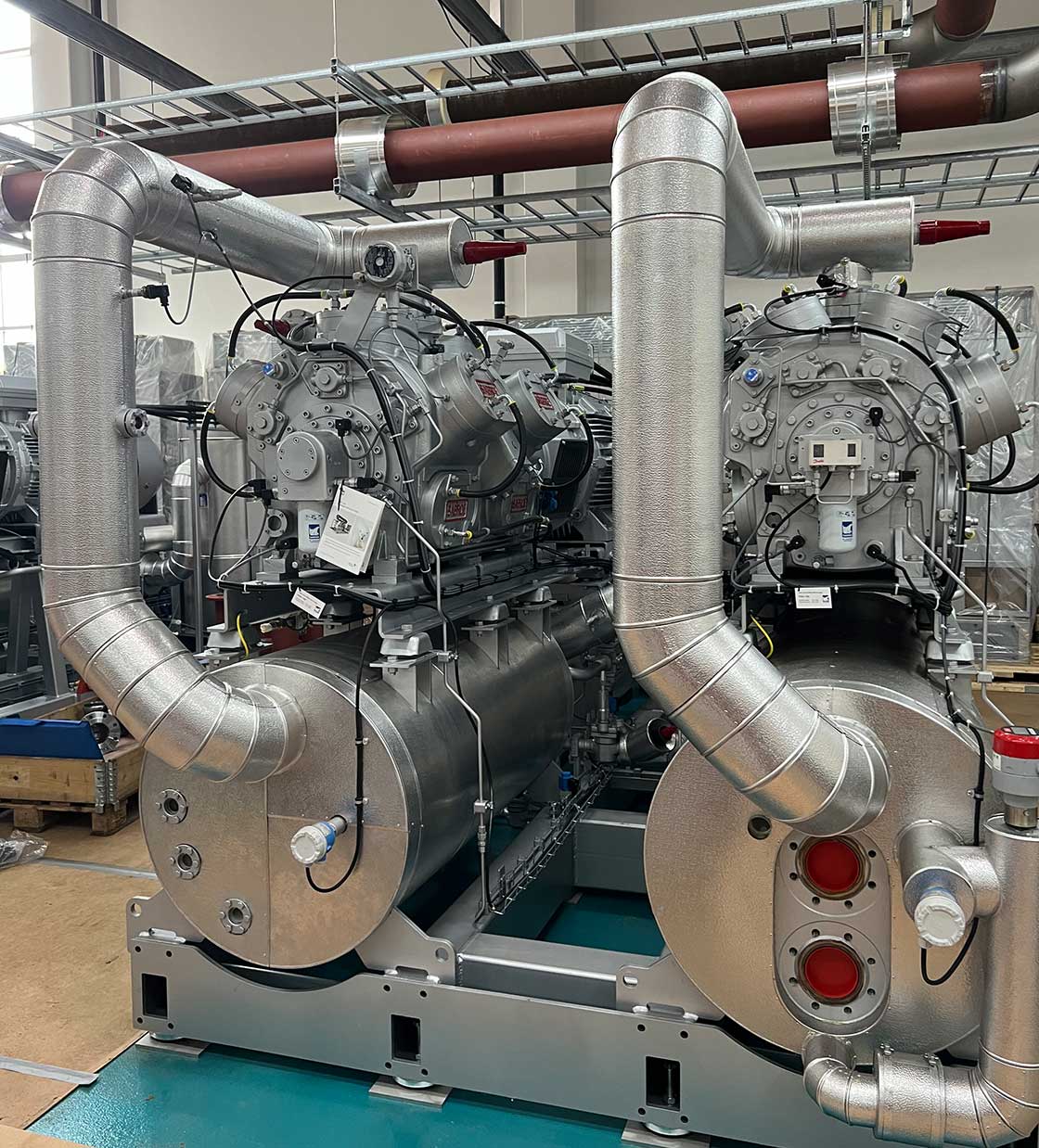
A large heat pump powering a district heating system at Frederiksberg Forsyning, Copenhagen. Photo: Linda Bergholt Bertelsen
He points to recent research showing that British children who grew up during austerity were, on average, five centimetres shorter than their Danish counterparts, with diet, healthcare, living conditions, illness and poverty to blame. Meanwhile, almost one quarter of homes in Scotland experience fuel poverty , while twenty-four per cent of Scottish children live in poverty.
“This energy crisis we’ve got right now is much bigger than affordability,” he says, “it’s a health crisis.”
It doesn’t look like energy prices will become less volatile in the near future. So, is it time for housing providers and communities to start taking the generation of cheap, renewable heat and power into their own hands?
Image gallery
-
 Final render
Final render
Final render
Final render
-
 Elevation 1
Elevation 1
Elevation 1
Elevation 1
-
 Elevation 2
Elevation 2
Elevation 2
Elevation 2
-
 Elevation 3
Elevation 3
Elevation 3
Elevation 3
-
 Elevation 4
Elevation 4
Elevation 4
Elevation 4
https://passivehouseplus.ie/magazine/feature/bonny-in-clyde?highlight=WyJ3ZWxscyIsIndlbGwiLCJ3ZWxsZSIsIndlbGxuZXNzIiwid2VsbGluZyIsIid3ZWxsIiwid2VsbCciLCJ3YXRlciIsIndhdGVycyIsIndhdGVyJ3MiLCJ3YXRlcmluZyIsIndhdGVyZWQiLCJiaWxsIiwiYmlsbHMiLCJiaWxsaW5nIiwiYmlsbGVkIiwiYmlsbCdzIiwiYmlsbCciLCJiaWxsaW5ncyIsImJ5IiwiYmlsbCBieSJd#sigProIdd309c551d5






